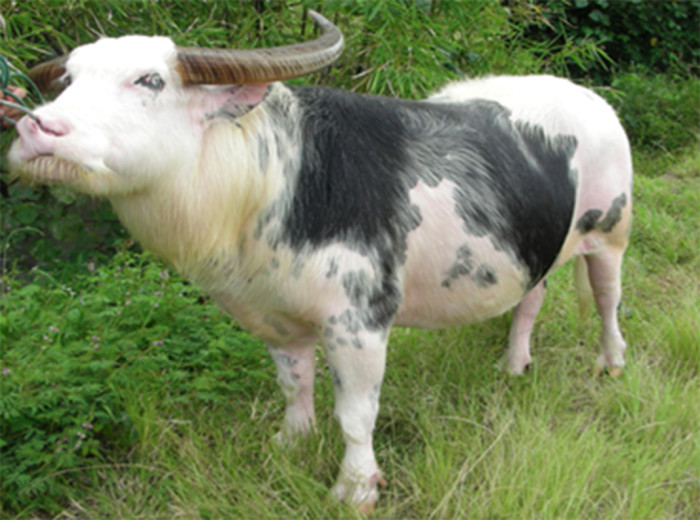At the Swedish University of Agricultural Sciences (SLU) and Uppsala University researchers have in an international collaboration with Bogor Agricultural University (IPB) and the Indonesian Institute of Sciences (LIPI) in Indonesia reached results with their research, which can be used to preserve the threatened white-spotted buffalo, which is a culturally and economically important domestic animal. The results have identified two independent mutations in the MITF gene underlying white-spotted coat colour in the swamp buffalo.
“We have in a successful collaboration with researchers in Indonesia investigated the genetics underlying the white-spotted coat colour in Indonesian swamp buffaloes by performing a comparison between white-spotted and normally coloured brown buffaloes”, says Maria Wilbe, who is a researcher at Uppsala University and one of the authors of the study.
The swamp buffalo is both an economically very important domestic animal in large parts of Southeast Asia – especially in the Toraja region. The white-spotted buffaloes are of a greater cultural importance, as they are considered holy and are sacrificed in funeral ceremonies. When an individual has passed away the sacrifice of the buffaloes is considered as being necessary for a “safe ride to heaven”. The cultural tradition of sacrificing white-spotted buffaloes is also a major attraction for tourism and therefore also of economically importance.
“The white-spotted coat colour suggested a defective development and migration of melanocytes, the cells that are responsible for melanin pigment production and we therefore decided to examine the MITF gene which we know is crucially important for the development and migration of melanocytes”, says Göran Andersson, professor at the Swedish University of Agricultural Sciences (SLU) who has led the study.
The population of white-spotted buffaloes has undergone a drastic decrease in number during the recent past years as the genetic factors responsible for the white-spotted coat colour have been previously unknown and circumstances have made it difficult to effectively breed a sufficient number of white-spotted buffaloes. The animals are therefore threatened to become extinct. But this may change now, as the results of the study have enabled Yulnawati Yusnizar, researcher at LIPI and one of the authors of the study, to open a breeding center for white-spotted buffaloes. The center, which is located in the city of Bogor, Java, Indonesia is called The Indonesian Buffalo Conservation & Breeding Center.
The study identified two independent mutations in the MITF gene which each was resulting in a lack of production of functional MITF proteins. These mutations have a dominant effect on the coat colour phenotype and the white-spotted buffaloes become white when they inherit the mutation from one of the parents.This identification of two independent mutations in the same gene gives, according to Göran Andersson, evidence for the strong selection of the white-spotted coat colour trait.
“Based on our results we have developed a methodology allowing the identification of in vitro fertilized embryos that will develop into white-spotted buffaloes following embryo transfer. This technology will increase the possibilities to preserve the white-spotted buffaloes,” says Maria Wilbe

